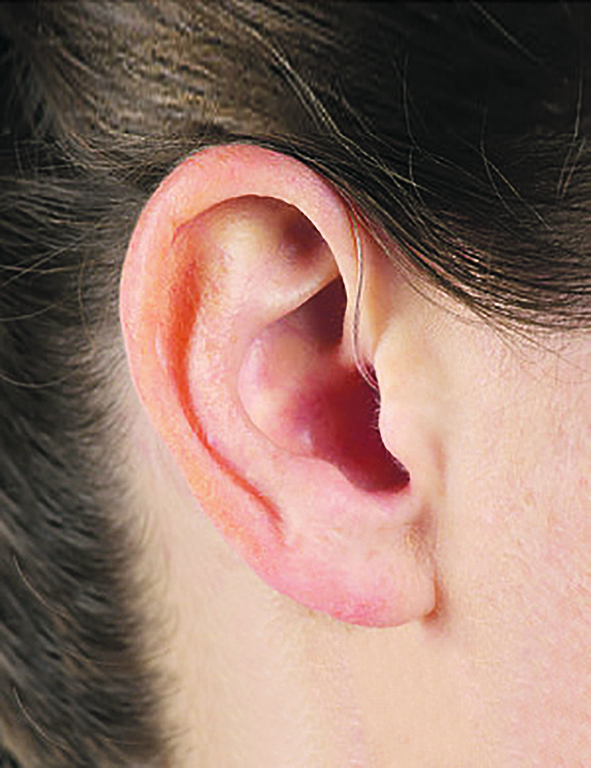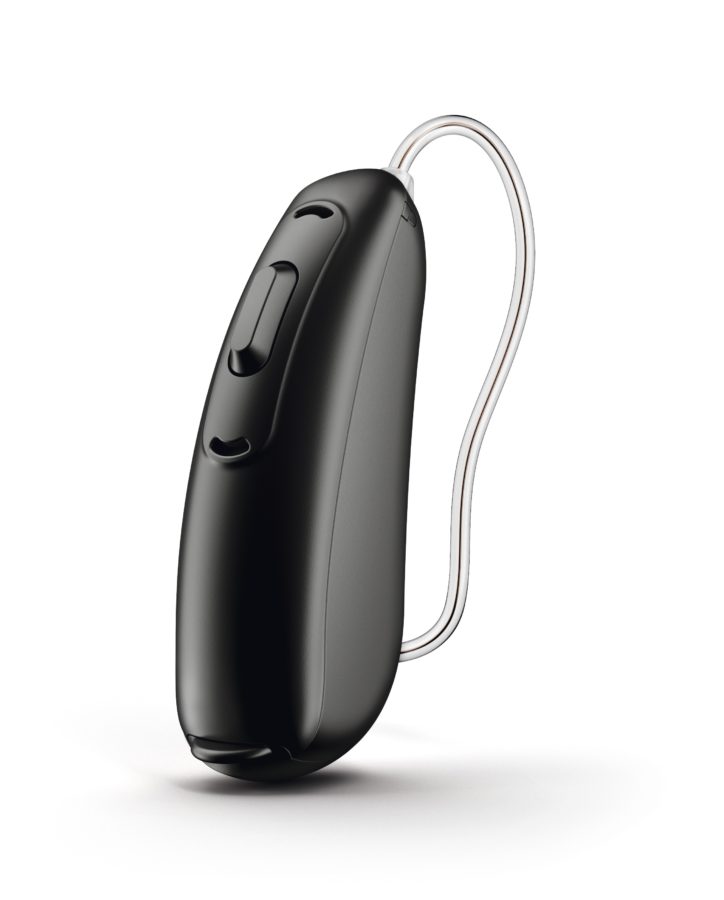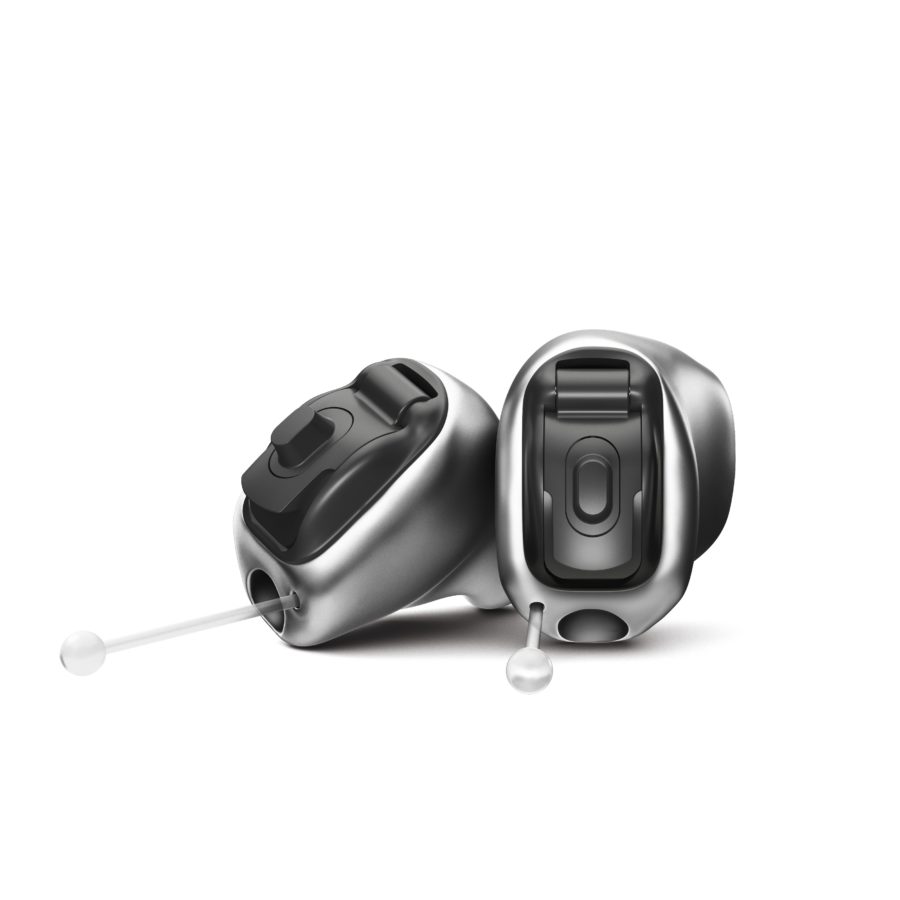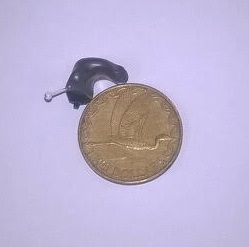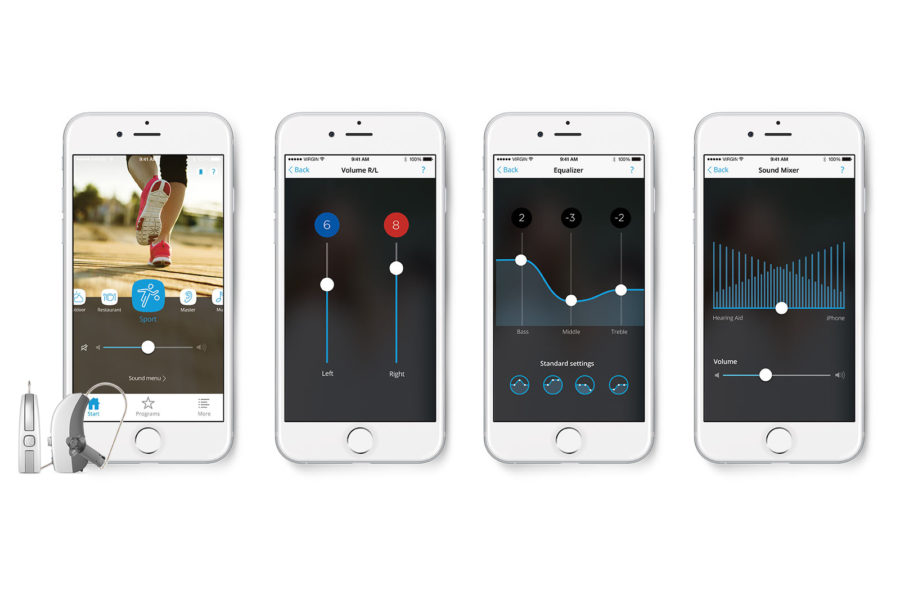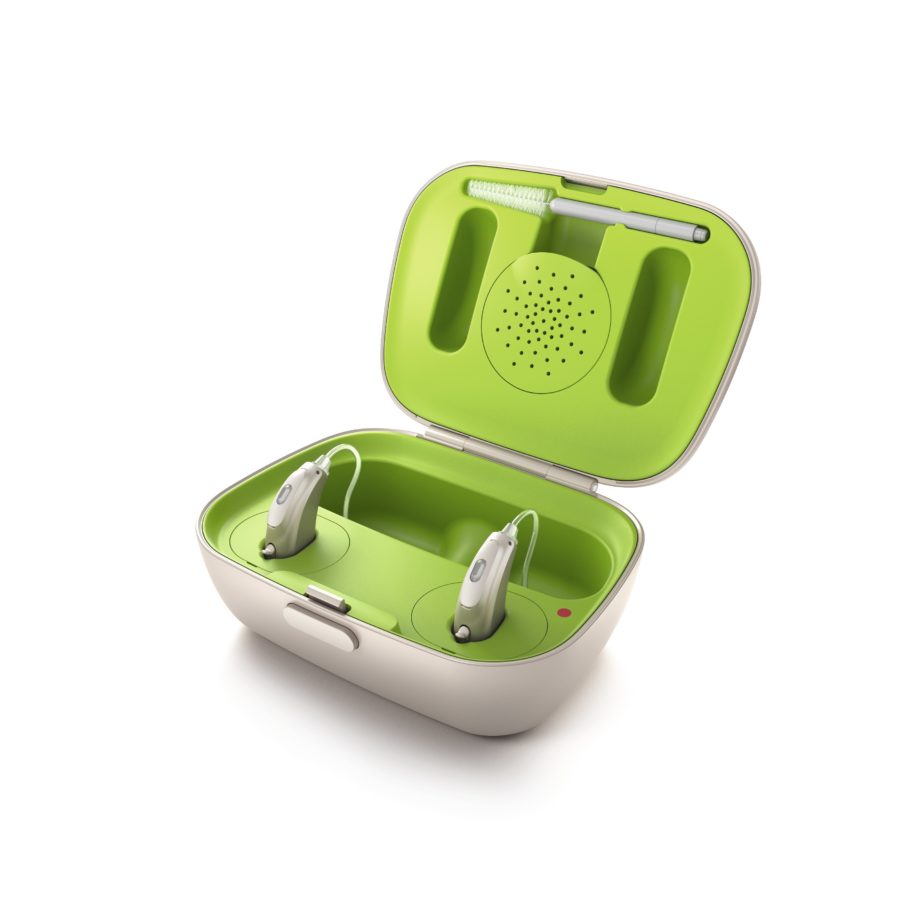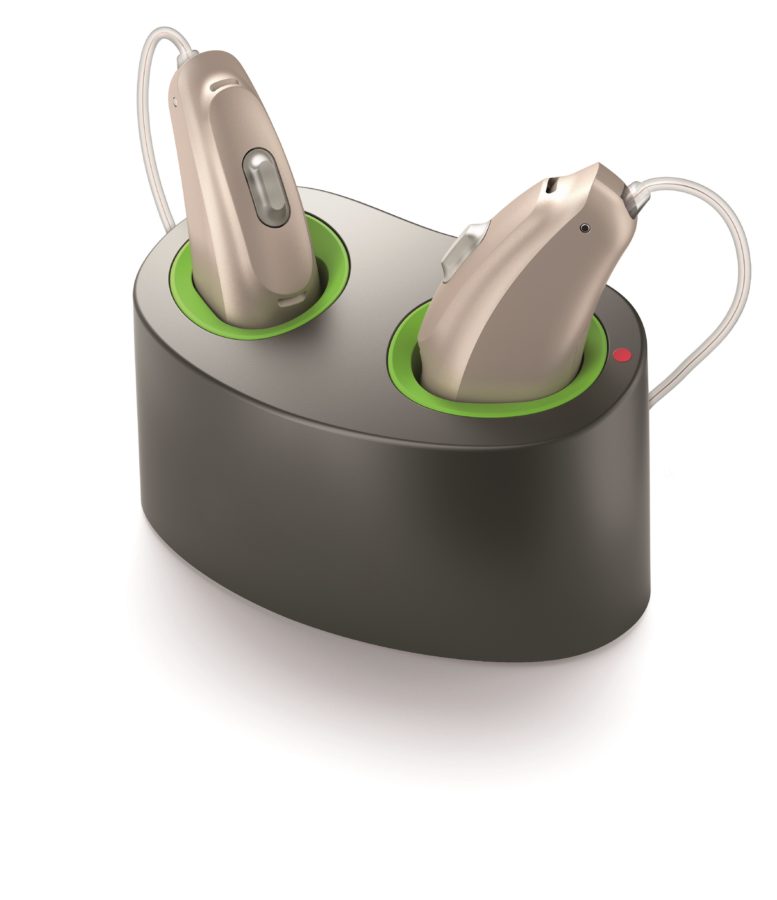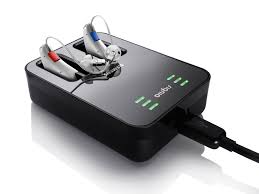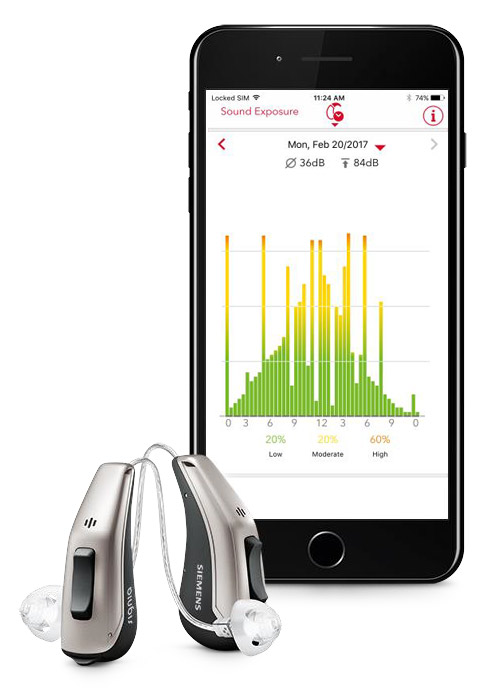In my experience, most people like milk with their tea. Some people enjoy sugar in their coffee. Sometimes I prefer herbal tea. Have you thought about how you would like your hearing aids?
The post Directory: List of Ear Nurses for Ear Wax Removal appeared first on Auckland Hearing.
]]>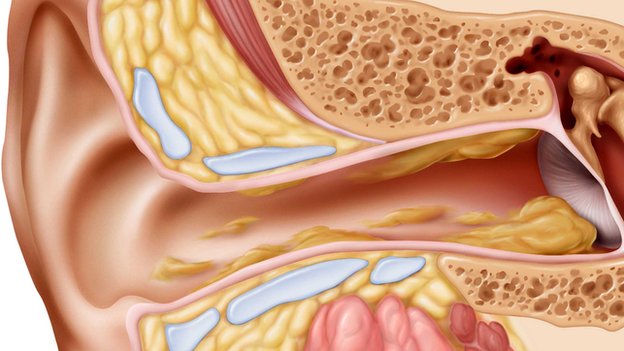
Sometimes wax accumulates in the ear canal. This needs to be removed before a hearing assessment. An ear nurse is the best professional to see for this. An ear nurse is the best professional to do this.
Note: We do not do wax removal by suction at Auckland Hearing, we are an Audiology clinic – this list is for your information.
Please scroll down to find the details for your closest Ear Nurse Specialist and contact them directly.
At Auckland Hearing, we provide audiological services like hearing tests and fitting hearing aids. You must see an ear nurse specialist who will remove wax from your ears. At this stage, we do not have an ear nurse working from our Auckland Hearing rooms.
 Before testing your hearing at Auckland Hearing we will look in your ears to check your ear canals and eardrums are healthy and free of wax. If your ears are blocked with wax we need to organise to have it removed before beginning the hearing test.
Before testing your hearing at Auckland Hearing we will look in your ears to check your ear canals and eardrums are healthy and free of wax. If your ears are blocked with wax we need to organise to have it removed before beginning the hearing test.
When your ears are blocked with wax it will affect the hearing test results, as we are trying to find out the very
quietest sounds you can hear. If they are only partially blocked (and the wax is deep in your ear canal) we may still ask you to have it removed. This is because we use insert earphones to test your hearing and would not like to push wax further down your ear canal towards your eardrum.
If you have hearing aids or are thinking about getting them, a partial wax blockage is also likely to affect the way they work (possibly causing acoustic feedback or reducing the available sound ).
If you need wax removed, we recommend you see an ear nurse.
Why do I get wax in my ear?
Our ear canals have specialized cells that produce cerumen, commonly known as ear wax. Ear wax is our natural ear cleaner, it also lubricates our ears and has an antibacterial function.
How does ear wax clean our ears?
The skin on our bodies is replaced and regenerated constantly. For most of our bodies, the old skin comes off on our clothes or when we dry ourselves with a towel. We do not usually have contact with the skin in our ear canals so it is the job or the ear wax to escort the old skin cells out and away.
 The skin in your ear canal naturally grows in an outward, spiral pattern. Your natural jaw movement like talking and chewing keep the process moving. Dead skin cells stick to the wax and they migrate slowly and constantly from deep in our ear canal – near the eardrum – to the entrance of the ear. For most people ear wax clears by itself with a normal face and hair washing.
The skin in your ear canal naturally grows in an outward, spiral pattern. Your natural jaw movement like talking and chewing keep the process moving. Dead skin cells stick to the wax and they migrate slowly and constantly from deep in our ear canal – near the eardrum – to the entrance of the ear. For most people ear wax clears by itself with a normal face and hair washing.
Then why do I have wax in my ears?
Some people have ear wax accumulation over time; they may have a narrow or bendy ear canal or their natural wax system may not be working so well (perhaps from using cotton buds in their ears). Also sometimes using hearing aids or earplugs may cause wax build up as the ear canal is blocked and the wax cannot migrate out all the way. An ear nurse specialist is the best professional to see if you need wax removed.
Getting it out…
People are often tempted to use cotton buds or other items to clear their ears. This can push the wax further down the canal, further impacting the wax or may even push it onto the eardrum – which is very uncomfortable. It is also possible to puncture the eardrum, which is very painful and can have long-lasting effects.
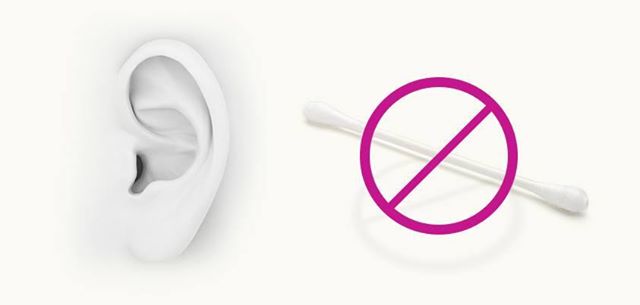
Why should I see an ear nurse specialist?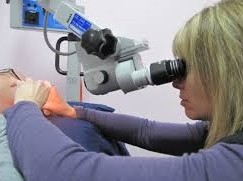
An ear nurse will offer you safe removal of ear wax or other debris blocking the ear canal using a microscope and gentle micro-suction. Suctioning is less traumatic than syringing and has a lower risk of infection. Ear nurse specialists are trained in ear health.
What if I get the wax out and I still can’t hear well?
A wax blockage can cause hearing loss because it can act as an earplug and stop sound passing through your ear canal to your eardrum. Sometimes taking the wax out, can help you to hear better. However, if there is a gap through to the eardrum sound will be passing through normally. Please contact us at Auckland Hearing if you are still not hearing well enough after that wax has been taken out. We will do a hearing assessment, and we can let you know what to do next.
Ear nurse directory
Central Auckland
Lesley Tuck
155 Remuera Rd, Remuera
Adults $50 ACC & War Veterans – no surcharge
Wednesday afternoon and all day Thursdays
Ph: 09 529-5550 mb 0273 500 004
East and South Auckland
Debby Sandow
50 O’Halloran Road Howick 2014
Home visits available in Howick or Pakuranga
Debby can see children
Fee: $45.00
ACC & War Veterans – no surcharge
Ph 0274 427040
Carol Lazarus – Ear Nurse Specialist
Takanini – Mondays
26 Balgowan Terrace, Conifer Grove
Pakuranga/ Takanini – alt. Fridays 10 am to 4 pm
170 King Street / 26 Balgowan Terrace, Conifer Grove
Ph: 0800 111 565 or Mb 021 1658 556
South Auckland Ears – Ian Fitzgerald
Counties Medical building, 6 O’Shannessey Street
Tuesday, Wednesday and Friday evenings: 4 pm until 7.20pm
Saturday: 8.20 to 1.20pm
Fees: $50.00 adults, $45.00 seniors, $35.00 children.
Phone or text Ian on 021 540 535
North and West
Nurse Specialist Ear Clinic – Margaret Couillault
Health – I Care Medical Centre Building,
215 Wairau Road, Wairau Valley
Ph: 09 634 0893
Book online
Tuesday, Wednesday & Thursday
Professional Ear care – Barbara Middleton and Kahn Bury
Westcare Specialist Centre, 1 Moselle Avenue or off 131 Lincoln Road, HendersonClinic days:
Tuesdays 9 am to 4 pm with Barbara Vail Middleton CNS Otology
Fridays from 8.30 am to 4 pm with Kahn Bury, Ear Nurse Specialist.
Fees: First Visit – $55.00; Gold card holders – $50.00; Follow up – $50.00; Examination only – $45; Tertiary Students – $40.00; Children – $40; War Pension and ACC Hearing Aid clients are free as the costs are claimed through those departments or Associations; IHC Clients & special Olympians are free
Ph: 09 834 4446
Auckland Wide
Carol Lazarus – Ear Nurse Specialist
Please call for an appointment
Ph: 0800 111 565 or Mb 021 1658 556
Mon: Pukekohe/Takanini
Tues: Henderson/Henderson
Wed: Papakura/Takanini
Thurs: Manukau/Takanini
Fri: Pakuranga/Howick
These are alternating weeks, 9am-4:30pm
Auckland DHB Ear Clinics- (Children ONLY)
The ear nurse service is available (and free) to all children living in the Auckland District Health Board area. The area is bordered by Point Chevalier, Avondale, Blockhouse Bay, Otahuhu, Mt Wellington, Glen Innes, The Eastern Bays and The Gulf Islands.
There are two options to access this service.
- Ear Clinic Greenlane Clinical Centre (9am to 2:30pm)
- Mobile Ear Clinic – which visits some schools in the area.

Services provided by Mobile Ear Clinics are:
- Glue ear assessment and management
- Wax/foreign-body removal
- Grommets checks
- Treatment of discharging ear(s)
- NB: NO hearing tests are performed in the Mobile Ear Clinic.
To make an appointment:
Who Can Refer: General Practitioners, medical or educational personnel, parents/caregivers.
- Call: please phone Starship community (09) 639 0200
- Non-urgent: written referral to Central Referral Centre, Building 10, Ground Floor, Greenlane Clinical Centre
- Acute referral e.g. chronic suppurating otitis media: fax referral toAudiology, Greenlane Clinical Centre at (09) 630 9751

“Do I need hearing aids?”
Well… “Do you need hearing aids?” Hearing loss is common Many people wear hearing aids Have you noticed them? Hearing aids have changed significantly over the last few years and continue to change at a great rate. Like phones, computers… READ MORE
- Ear wax removal – Auckland Ear Nurses
- Quiet new hearing clinic
- Hearing aids – Your decision
- Getting Hearing Aids – The Process
The post Directory: List of Ear Nurses for Ear Wax Removal appeared first on Auckland Hearing.
]]>The post How to apply for ACC Hearing Aid Funding appeared first on Auckland Hearing.
]]>
You may be able to get funding for hearing aids through ACC (Accident Compensation Corporation). So how do you apply for ACC hearing aid funding?
You may qualify for ACC hearing aid funding if you:
- have had an accident in New Zealand that caused hearing loss in one or both ears
- have worked in a noisy environment in New Zealand and you believe that it caused your hearing loss.
ACC provides three levels of funding
The level of ACC hearing aid funding for each claimant is decided by assessing each individuals situation and attributing how much of the hearing loss is due to the accident or noise exposure.
ACC hearing aid funding for both ears (Binaural)
- Level 1 – $ 3157.90 (incl GST)
- Level 2 – $3904.40 (incl GST)
- Level 3 – $4953.05 (incl GST)
ACC hearing aid funding for one ear (Monaural)
- Level 1 – $ 1873.35 (incl GST)
- Level 2 – $ 2247.10 (incl GST)
- Level 3 – $ 2770.93 (incl GST)
How to apply for ACC hearing aid funding
- See you GP – Your GP will send the ACC45 form to ACC
The ACC hearing aid funding process starts with a visit to your GP. Your GP will need to apply to ACC on your behalf.
- Fill out and return forms to ACC
ACC will send you a pack with information and some forms to fill in and send back to them. They will ask about your accident or work history.
- Audiologist Assessment
ACC will send you a request to see an Audiologist for a full diagnostic hearing assessment. Please give us a call at Auckland Hearing; we will make you an appointment. We will do a full diagnostic hearing test and fill in the forms to send them back to ACC. ACC covers the cost of this hearing test.
- ENT specialist appointment
ACC will make you an appointment to see an ENT specialist. They will decide how much of your hearing loss is due to noise and how much is from other things, i.e. age. ACC covers the cost of this appointment.
- ACC Hearing aid funding
ACC will make their decision and send you a letter letting you know at which level of funding you have qualified.
- Hearing needs assessment
We will see you again at Auckland Hearing for a need assessment appointment to decide which hearing aids are best for you.
- Fully funded hearing aids
We can provide fully funded hearing aids at all funding levels, or you can top up to other hearing aids if you choose to.
More information
In 2014 funding was changed and improved for ACC claimants here are some more details about the current ACC funding system.
How to order your ACC funded hearing aids batteries
If you do not feel ACC is the right path for you, please check out the other hearing aid funding options in New Zealand.
Getting started with your ACC application
If you are not sure about whether you could be eligible for an ACC claim or would like more information, please make an appointment for a free hearing check and discuss your options and the way forward.
The post How to apply for ACC Hearing Aid Funding appeared first on Auckland Hearing.
]]>The post Do I need hearing aids? What is the right solution for me? appeared first on Auckland Hearing.
]]>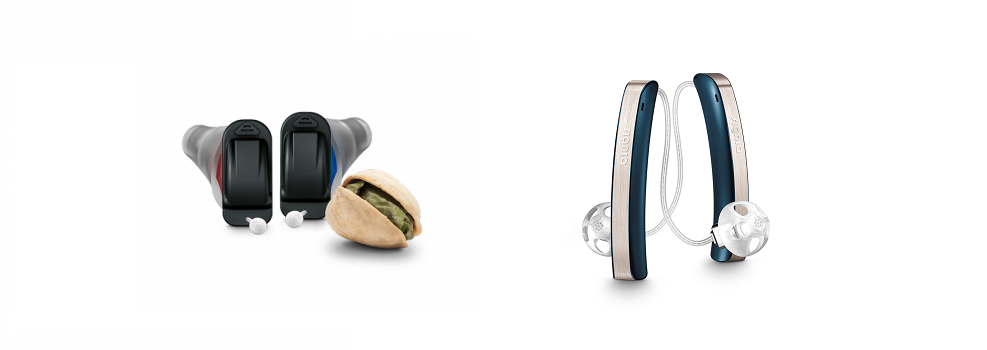
Well… “Do you need hearing aids?”
Hearing loss is common
Many people wear hearing aids
Have you noticed them?
Hearing aids have changed significantly over the last few years and continue to improve at a brisk rate. Like phones, computers and tablets, hearing aids are mini computers that are processing more and more information. Every year or two each of the larger manufacturers brings out new and improved products.
Manufacturers often release the higher end products first, then gradually they release the mid-range and value products. The advantage of this is that there are excellent hearing aids in every technology range and they are continually improving. What great news this is for people with hearing loss, because hearing aids are not only effective at helping you communicate understand conversation in your everyday life, they look good too!

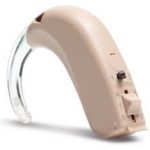
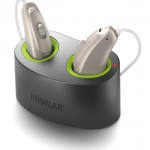
How will hearing aids help me?
Simply- Hearing aids provide audibility for the sounds that have been missing
Hearing the sentence correctly the first time means that you will (most likely)* say goodbye to:
- Auditory fatigue (less mental gymnastics to work out what was said).
- Having to ask for repeats.
- Embarrassment from getting something wrong.
After wearing hearing aids for a while, you will notice you are more relaxed and confident in social situations and general conversation:
- More confidence – in yourself as you are sure you are responding correctly
- More interest – in being involved in social events, as you are confident to join in
- More relaxed – as you will no longer need to be on hyper-alert; you know you will hear things around you – like the doorbell, the phone ring or people walking up from behind
*Most likely – because this is hearing loss dependent. People with severe/profound hearing losses or very poor speech discrimination may not receive all of these improvements. If we think this may affect you, will discuss it in detail before choosing hearing aids. The most significant changes happen for people who wear their hearing aids all the time.
Detect sound with your ears
Our ears are designed with collect sound from the environment and amplify it to a level where it can be delivered, via nerves, to the hearing centre in our brain (auditory cortex). The brain uses the electrical signal to recognise sound from the environment and understand speech.
Hearing loss means the ears are damaged in some way. In most cases, just increasing the volume of the sound to our ears is not helpful to improve hearing clarity.
Hearing aids are small computers that often work together to optimise the signal received by the brain. They are constantly measuring the sound environment and adjusting the way they amplify to optimise hearing comfort and speech understanding and to reduce listening effort.
Higher level hearing aids have more automatic features to modify the sound to help you hear easier and with less effort.
Hear with your brain
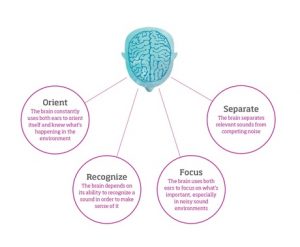
Use it or lose it
Wearing hearing aids more strengthens the auditory system by giving it more practice with listening to various sounds and helping it relearn/learn which sounds are important and which sounds are not.
The ability to understand speech, especially in noisy environments usually improves with increased wearing time.
Regular hearing aid use will help your brain “hear better”
Interpreting sound information requires regular exposure. People who wear their hearing aids “only sometimes” are giving their brain two signals, hearing and not hearing, some sounds.
Their brain does not have as much practice interpreting the sound information and will not be able to use the information so well.
The ability to understand speech reduces over time – especially with a significant hearing loss
When there is hearing loss, the brain is not receiving the signal for all the sounds in the area of hearing loss. As this continues for many years, the brain does not have practice using the sound message and becomes less capable of managing the auditory information. It may even relocate those brain resources to another function (typically the visual system). The sooner you get hearing aids, the sooner you are providing your hearing system with sound and keeping it active.
“I notice an improvement in my client’s ability to repeat back single words, in quiet, with regular hearing aid use.
This effect is most potent for people with more severe hearing losses, who have waited a long time to get hearing aids.
Maree O’Sullivan (Audiologist)
A bit about Hearing Aids
Hearing aids have a lot of technology innovations working together to bring about the outcome of “simply” hearing. Below is a brief description for some of this functionality. There are 9 hearing aid brands that are approved by the Ministry of Health in New Zealand. Each brand has “speciality features” and often they use different terms for some of these:
Programmed for you
All hearing aids (supplied by a qualified professional) are programmed and then fine-tuned specifically for you. Your hearing test (Audiogram) is used to calculate the right amount of sound specifically for your hearing levels.
Adjust to your listening environment
Hearing aids do not amplify all sounds equally, they amplify quiet sounds more than loud sounds; this allows as many sounds as possible to be both audible and comfortable. Hearing aids are not just a volume control.
Directional microphones
Directional
Feedback cancellation
Feedback cancellation makes sure that the hearing aids do not feedback (make a loud high-frequency sound). This can happen if the sound from the “loud-speaker” reaches the microphone.
Noise reduction
Noise reduction is a feature in most hearing aids, the way it works varies between brands. Most hearing aids are able to focus more on speech sounds and reduce the loudness
Physical comfort
Current technology hearing aids are light and comfortable in your ears.
Cosmetics
Hearing aids no longer look like a medical device. Now they are a piece of technology like a computer or
Hearing aids style
Below are examples of the receiver in the canal type technology for some of the brands. There are many other styles of hearing aid as well. The choice of style will depend on preference and degree of hearing loss.
Connectivity
Hearing aids can connect to other devices like a phone, TV or remote microphone to take the sound from these devices directly to your hearing aids.
There are many other hearing aid features available from various suppliers, for example waterproof hearing aids, personalisation, stereo sound and more.
Current hearing aids look like this
Here are examples of the receiver in the canal type technology from some of the brands. As you can see, the terminology used to describe this style varies between manufacturers.
The picture below shows the different styles of hearing aids that are available. The choice of style will depend on your preference and degree of hearing loss.
-
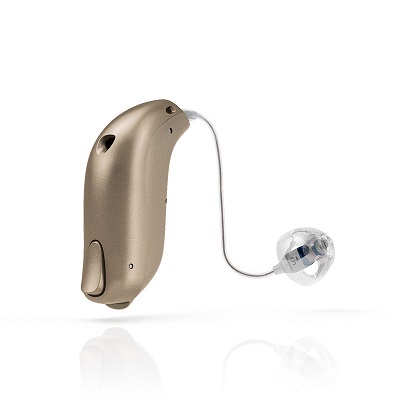
Bernafon Zerena hearing aids -

Oticon opn -

Phonak rechargable hearing aids -
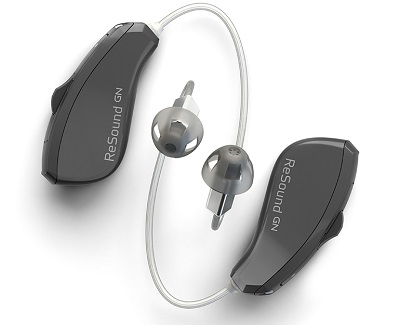
ReSound linx quattro hearing aids -
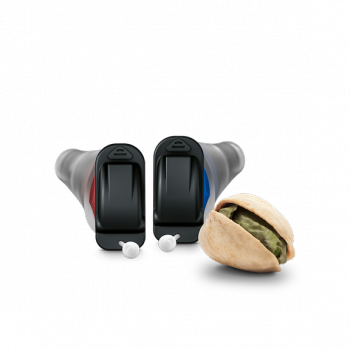
Signia Silk Nx hearing aids -
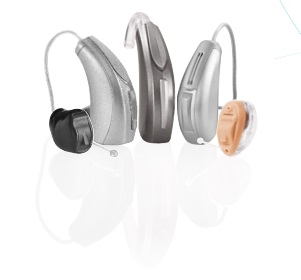
Starkey Muse IQ -
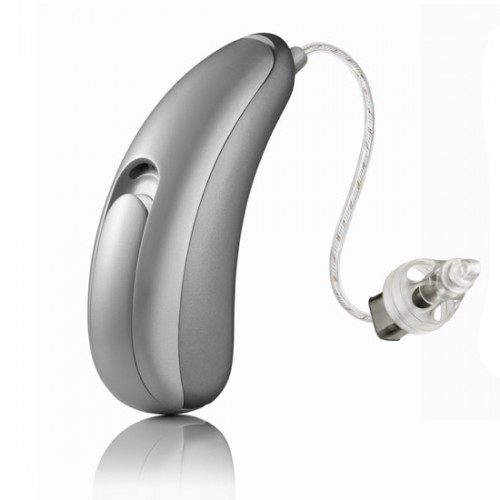
Unitron Moxi Kiss -

Widex evoke hearing aids
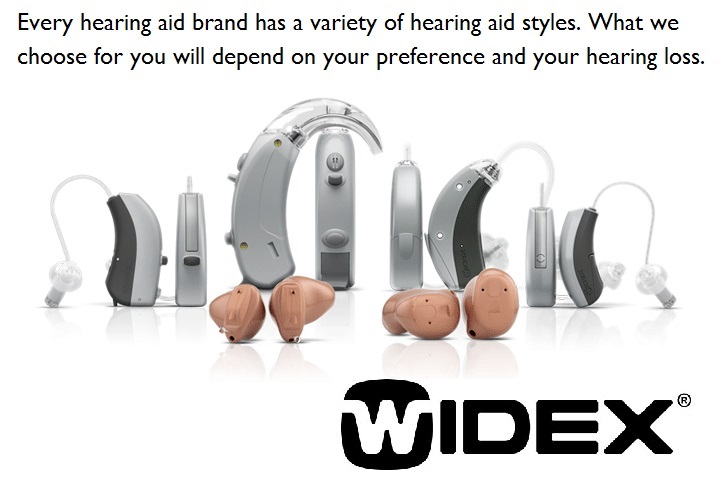
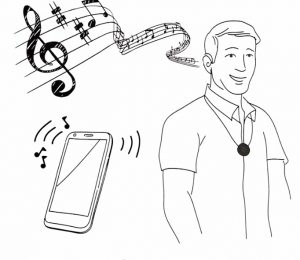
There are many technologies available now that connect up with your hearing aids. They connect to your phone
(land line or mobile), TV, computer, MP3 player and stereo. You can also get remote microphone technology, where you can give the speaker a microphone or place it on the other end of the table, then hear the conversation directly into your hearing aids.
Watch this video for example of how technology can work with hearing aids.
What is the right solution for me?
Once you have decided to improve your hearing, we will look in depth at your lifestyle and listening needs to make sure we get the best solution for you. The best solution for you may not be hearing aids. We will let you know all the options then you can choose what you think will work best. We will ask you questions about your lifestyle and listening needs, then match the best technology (or other option) for your situation. Learn more about the process of getting hearing aids here.
Have you made the decision to try hearing aids?
A bit about Auckland Hearing
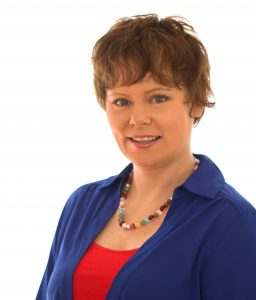
(Audiologist at Auckland Hearing)
Auckland Hearing is an independent hearing aid and audiology clinic set up by Maree O’Sullivan. Maree has worked in Audiology for 20 years and started Auckland Hearing so she could focus on the needs of each client (rather than corporate profits).
We provide a full range of hearing services and work with all of the Ministry of Health approved hearing aid brands in New Zealand. This means we can fit the hearing aids that best suit your needs.
Hearing aids – Your decision
Are you ready to get hearing aids?
Your family might think you need hearing aids
Your audiogram (hearing test) might suggest hearing aids would help you
But are you ready to get hearing aids – for yourself?
Every process begins with a decision. The key to success with hearing aids is: that you have decided for yourself that you are…

The post Do I need hearing aids? What is the right solution for me? appeared first on Auckland Hearing.
]]>The post Making your decision to get hearing aids appeared first on Auckland Hearing.
]]>
Every process begins with a decision. The key to success with hearing aids is: that you have decided for yourself that you are ready to get help with your hearing and that hearing aids are the best option for you.
It is important that you have observed or decided some or all of these:
- you have noticed that your hearing is influencing the way you live your life
- you would like to improve your communication
- your would like to improve your relationships with family, friends and/or work colleagues
And that you want to do it for you – not to please someone else.
When would getting hearing aids not be your decision?

- Sometimes well intentioned family members influence people to get hearing aids
- you may be influenced by a professional – based on the level of hearing loss (audiogram)
- Because you “should” even though you are not quite ready in yourself
Why do I need to make this decision for myself?
Over all the years that your hearing has been gradually changing, so has your brain. The auditory part of your brain has been receiving less sound input, so it has had less information to process. In the “use it or loose it” way that our bodies work – the auditory processing part of your brain has been forgetting what to do as it hasn’t had to work so hard (other cognitive parts of your brain have been working harder to try and keep up with conversation, often causing auditory fatigue).
Luckily, once we provide that missing sound to your auditory system it can begin to use the information again and as long as it hasn’t been to long and your hearing loss is not too severe, usually we can get most of that functionality back. Just like when we start on a new exercise program, when we get hearing aids we need to start slowly and rebuild our “hearing muscles”. And like a new exercise program –
It can be hard work at the beginning
as you give yourself time to adjust to hearing again

Luckily, hearing aids now are of such great quality that you will adjust very quickly. Within half an hour, sounds that seemed strange or new when you first put on the hearing aids will begin to normalise.
The key to real success with hearing aids is continual use. A big reason that it is important that you are ready in yourself to get hearing aids is that we are going to …
We want to create a new normal – Normal to hear
To create a new normal, we are going to ask you to wear your hearing aids as much as you can. At first, you may find it tiring, as your brain has to work hard to process the extra sound that it had forgotten about over the last few years. By the end of the first two-week trial period you should be at the point where you can wear your hearing aids all day every day. By the time you finalise your hearing aids (decide you want to keep them) it will feel normal for you to hear.
Helping you adjust – moving from comfort to clarity
Usually we begin the hearing aid fitting process by working out how much sound you require to compensate for you hearing loss, then intentionally turn it down to keep the sound comfortable and acceptable. The goal at the first fitting is to get the sound comfortable, so that you are able to wear the hearing aids as much as possible, giving your brain time to adjust to the new sound. We then gradually turn the sound up over time. This gives your brain time to adjust to the sound, keeping it comfortable at the start and increasing the clarity over time.
It is key that you decide that you need hearing aids for yourself – because once you have decided to improve your hearing, there will be a short adaption process to go through as you adjust to hearing again.
Being ready and in a positive mind set helps this process run smoothly.
You are about to start on a hearing adventure.
If you are doubting your readiness for the process you may find it a bit harder to adjust to the new sound and to get on with hearing, communicating and getting involved.
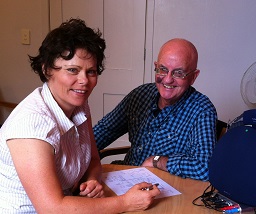
Max Ross
Auckland City
What will help me get to the point of readiness for hearing aids?
When you come along for your hearing assessment appointment we will talk to you about your hearing loss, how it is affecting your life and your options to help with your hearing (if required). After this appointment you will have time to think about and notice those effects as they happen in your everyday life.
You will know when you are ready to take action. You will be ready to:
- hear accurately the first time – not have to ask for repeats
- be involved in the conversations – rather than sit back so as to not feel embarrassed in case you miss something
- feel more relaxed – as you will hear the doorbell, the phone ring and the person walking up from behind
- feel more confident – as you are sure you are responding correctly
- have easier communication in your close relationships – because you hear correctly the first time
Ready Now? Follow this link to book your appointment.
Once you have made the decision to get hearing aids I’m sure you will have many questions about the process and what might be the best options for you. If you have questions about getting used to hearing aids or the adaptation process please add your questions below.
Or read on to the next article to find out more about the process of getting hearing aids.
Getting Hearing Aids – The Process
Hearing aids are fitted on a 60 day trial
Once you have decided to trial hearing aids, the process usually takes about 6 w…
The post Making your decision to get hearing aids appeared first on Auckland Hearing.
]]>The post How do you like your hearing aids? appeared first on Auckland Hearing.
]]>
Like computers, tablets and phones, hearing aid technology is improving quickly. Hearing aids have more and more functions and features which fit into tiny packages that sit in or behind your ear. Current hearing aids do more than compensate for hearing loss with amplification. They are small computers that measure your sound environment then modify the way they amplify to maximize your hearing clarity.
When getting hearing aids we need to consider the technology level and functionality that will best compensate for your hearing loss; as well as the other features and additional technology you might find useful to make life easier.
Getting the right hearing aids for you
Good core hearing aid functionality is key to success. Choosing the correct level of amplification, fitting to your ear and technology level for your hearing needs must be guided carefully by your Audiologist. Follow this link for more details about how we go about assessing your listening needs.
Once we have decided on the right hearing aid technology for you, we can consider the added features that are available. These can help with ease of use, connectivity and better hearing in specific listening environments. These features are available at most technology levels. Once we have decided on the right hearing aids for you we can decide if you would like any additional technology to go along with them.
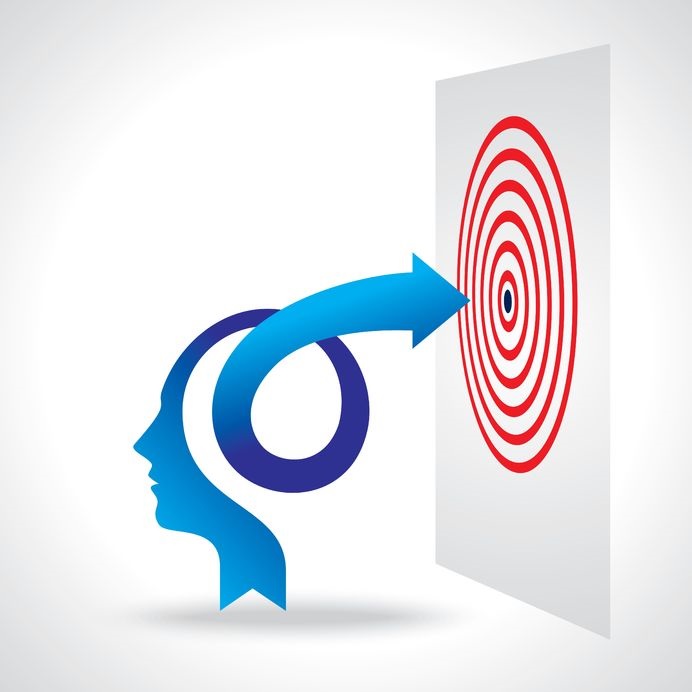
How would you like your hearing aids?
Hearing aid style and cosmetics
Finding the most discrete hearing aids is a priority for many new hearing aid users. Cosmetics, of course, has to be balanced with comfort, reliability and and sound quality.
Receiver in the canal (RIC)
The most commonly fitted style of hearing aids in recent times is the Receiver In the Canal (RIC), also known as the Receiver In The Ear (RITE) / (RIE). These hearing aids have a relatively small hearing aid that sits behind the ear, the receiver (loud speaker) sits in the ear.
An advantage of these hearing aids is that the receiver can be changed to a more powerful one if there is a change in hearing or replaced if they breakdown (at a significantly lower repair cost). These can be fitted with universal fit domes or custom moulds. There are many behind the ear styles available with various tubing options.
In the canal hearing aids (IICs, CICs and ITEs)
Some people prefer not the have anything sitting behind their ear. There are various size options depending on client priorities including Invisible in the Canal (IIC) hearing aids, Completely in the Canal (CICs) and In the Ear (ITE) hearing aids. Most brands have these hearing aid styles available. They have historically come with trade offs in comfort and reliability (as you may have an electronic device deep inside your ear); however these issues improved dramatically over the past few years. There are many in the ear styles available.
Control your hearing aids with an app
In an ideal world hearing aids measure the sound environment, highlight the sound you want to hear and bring it to you with increased clarity. In most cases hearing aids do this well. However, sometimes you may want to adjust the hearing aid sound for the environment you are in. You may want to hear the person who is speaking from behind you, like in a car; you may want to appreciate the nuances of music or you may want to hear well in a particularly reverberant (echoy) room.
In these cases you may want to change the way the hearing aids are working; adjust the volume, or focus on sound for a particular direction. This is where a remote control app may come in handy. Apps usually give you the option to change your hearing aid volume, program setting and in some cases pitch and adjust how the hearing aids respond in noise.
Rechargeable batteries
Rechargeable batteries in hearing aids have been available for a number of years. Within the last year we have seen a surge of new rechargeable hearing aids from more manufacturers with improved battery life. The 3 main reasons to choose rechargeable hearing aids:
- Simplicity – Just pick up your hearing aids and put them on in the morning and at night put them back in the charger. No need to open battery doors to turn them off or having batteries run out unexpectedly.
- The environment – many people are aware of the waste they create when they dispose of used hearing aid batteries every week or two. We do not have a hearing aid battery recycling system in New Zealand, so they go into landfill.
- Less cost and hassle– although the battery charger costs a little more at the beginning there is an overall cost saving when choosing rechargeable hearing aids. There is also the added convenience of not having to think about buying batteries.
Connect directly to your phone
For those of us who rely on phone conversation, having our phone connect directly into our hearing aids makes the voices so much clearer and easier to hear. Direct to iPhone hearing aids a have been around for a few years and now available from many of the manufacturers. Users of direct to iPhone hearing aids can listen directly to phone calls as well as other audio produced by an iPhone or iPad.
Another built in advantage of the direct to iPhone technology is that your phone can be used as a remote microphone. Just put your iPhone at the other end of the table, or give it to the person with the quiet voice and the sound that reaches the iPhone microphone will be sent directly to your hearing aids.
Recently a direct to any phone hearing aid was launched by Phonak. This hearing allows direct connection to any phone with bluetooth 4.2 which includes android (and most older models). If you have an older phone, find out if your phone will work here with the Audéo B-Direct phone compatibility tool.
Use your phone hands free
These are the first hearing aids to allow true hands free talking. The phone can be sitting up to 5 metres away. You will hear it ring in your hearing aids and can answer it by pressing the button on the hearing aid. When you speak your voice is picked up by the hearing aids and sent back to phone. No need to pick up your phone at all, they are truly hands free.
Connect directly to media – Tv, computer, sound systems
Being able to connect your hearing aids directly to your TV, sound system or tablet means you will hear the sound a lot clearer the first time. Following the dialogue in movies and TV is so much easier. In most cases (other than direct to iPhone hearing aids) we need to add an intermediate device that sends the signal from your preferred audio device to your hearing aids.

Remote microphone technology

One of the biggest challenges for people with significant hearing loss, is hearing across distance. Speech understanding can be difficult over more than a few meters, even the best hearing aid technology. Follow this link and scroll down for a video demonstration of how remote microphone technology might help you.
Remote programming
There are many reasons that getting into the clinic to see your audiologist can be a challenge. Maybe you live a long way from the clinic, are not able to get to appointments during work hours or are home bound, for medical or transport reasons. If this describes you then we have a solution – Telecare audiology is now a reality.
Tele-audiology means that some of the hearing aid fitting process can be done from the comfort of your home or office. Once we have done a thorough hearing assessment and have fitted the hearing aids in the clinic we can do further follow ups from a distance. All you need is a smart phone and your hearing aids can be adjusted over the internet. Making the process of getting hearing aids easier than before.
So – how would you like your hearing aids?
Connectable?
Rechargeable?
Remote microphones?
Significant research and development in hearing aid technology means new hearing aids are being launched almost continually. As you can see there are many options to be considered when choosing hearing aids. It is important to consider how you would like your hearing aids to work for you. Our needs assessment will help steer you in the right direction to get the hearing aids that suit your lifestyle and listening needs best. Finding out about your preferences is an important part of choosing the right hearing aids for you.
At Auckland Hearing we keep up to date with new developments from all the manufacturers product lines. This is so we can choose the most up to date hearing aids that are best suited to your needs.
The post How do you like your hearing aids? appeared first on Auckland Hearing.
]]>The post Set 900 by Sennheiser – Your hearing aid alternative appeared first on Auckland Hearing.
]]>
As hearing loss increases in severity it makes conversation more difficult and stops us connecting with our friends and family. Some people need a simple solution that helps them hear their TV, listen to music and family and friends. The Set 900 by Sennheiser will help you hear music, family and the TV again.
Introducing the Set 900 by Sennheiser
This headset offers crystal clear audio in a lightweight, comfortable design. There are 3 setting to optimise speech understanding on the device and a large volume control that allows you to conveniently adjust volume without hassle.
The Set 900 by Sennheiser is simple to use, just place to your ears like a stethoscope and listen. Once you are finished place it back in the charging cradle to keep the battery charged.
This is deal for those wanting an easy way to keep communicating with family and friends but where manual dexterity or poor vision is getting in the way.

Three listening options
- Use the Set 900 by Sennheiser to follow the conversation with family and friends.
- Connect directly to the TV or music. By connecting the transmitter to your TV or sound system you can send the sound directly to the Set 900 receiver.
- At the theatre – your will get amplified stereo sound when you are out and about and in rooms equipped with infra-red technology (like the theatre).
Use immediately
To get started with your Set 900 by Sennheiser you just need to charge it then use it. No need for a hearing test or to travel to the clinic.
The post Set 900 by Sennheiser – Your hearing aid alternative appeared first on Auckland Hearing.
]]>The post ACC hearing aid changes – More funding, More choice appeared first on Auckland Hearing.
]]>
ACC covers the cost of accidents in New Zealand
ACC provides “comprehensive, no-fault personal injury cover for all New Zealand residents and visitors to New Zealand. This means you can apply for our help, no matter how you got injured, or whose fault it was” – ACC website – May 2014
ACC has been covering the cost of hearing habilitation for people who have hearing loss due to workplace noise or other accidents since the scheme began in 1974. Until 2011, ACC covered all costs associated with noise induced hearing loss. The system was changed and have contributed a smaller amount towards hearing devices and services, since then. In July 2014, ACC again reviewed their funding and here we outline the changes to the ACC hearing loss regulations and how it will help those with hearing loss due to noise or accident.
What’s new?
- A second opinion – ACC
 will fund a consultation with another clinic before trialling your hearing aids
will fund a consultation with another clinic before trialling your hearing aids - Increased ACC hearing aid payments
- A new flat fitting fee
- New funding for ear moulds
- Introduction of multiple repairs
- Better access to services for children.
ACC Hearing Loss Changes
More choice
Second device consultation – ACC will cover the cost of a second appointment with another hearing clinic or Audiologist to assess your needs and the best solution for you. This means that if you are not comfortable with your first recommendation for any reason, ie price you have the flexibility to seek other options.
More funding
More funding also gives you more options as you will have a greater range of hearing aids to choose from.
- Increased payments for hearing aids means there are now hearing aids that can be fitted at no extra cost to the ACC claimant “Free”. Or the top up amount will be a lot lower than with the previous funding criteria and giving the option of more sophisticated hearing aids.
- ACC have set a minimum fitting fee – this means that even if only a small portion of your hearing loss is attributed to noise (or accident) your fitting fee is covered by ACC.
Better follow up
ACC will cover the cost of more repairs up the the maximum of $234.09 for each aid within a 2 year period.
Ear moulds – ACC will contribute to the cost of new ear moulds, if they are needed, over the course of the hearing aid life time (must be more than 1 year after the aids were first fitted.)
History of ACC and Hearing support
Prior to January 2011 ACC covered the full cost of hearing aids and accessories, batteries, repairs, as well as annual hearing assessments and hearing aid adjustments. This meant that ACC claimants got first class service. ACC claimants had the ability to use hearing aids that met their needs as well as exceptional follow up and maintenance all covered by ACC.
Unfortunately as the ACC claimants increased in numbers. Due to better technology and more hearing loss among tradesmen (who had historically not protected their hearing), the cost became too great for ACC to maintain.
In early 2011 the ACC hearing loss policy was changed in a number of ways including:
-
- Increasing the level of hearing loss required to meet ACC funding criteria – to 6% hearing loss
-
- Reducing the funding towards hearing aids
-
- Reducing hearing related services like regular hearing assessment and hearing aids adjustment
- Reducing what ACC would contribute to ongoing repairs and maintenance.
This resulted in a significant saving for ACC. ACC expenditure on hearing devices and services fell from $59 million per annum in 2010 to $16 million per annum in 2013.
It also resulted in many ACC claimants being unable to afford the hearing aids that would best meet their needs. Some previous hearing aids wearers had to either go without hearing aids or get very basic hearing aids, increasing the effect of their hearing disability and their ability to function in their normal listening environment.
“The Ministry and ACC are concerned that people are not accessing the services and devices available to help them manage their hearing loss. People who suffer from injury-related hearing loss must be able to access the hearing services and devices they are entitled to in order for them to fully participate in employment, education, their community, and enjoy an improved quality of life. Hearing loss often leads to social isolation and depression.
The Ministry’s and ACC’s main objective is that services must be affordable and easy to access. In this case, more people need to be accessing the hearing loss services and devices they are entitled to so that people suffering from injury-related hearing loss can fully participate in society. Regulatory Impact Statement (RIS) – prepared by the Ministry of Business, Innovation and Employment (the Ministry).
The new ACC hearing aid changes are worth celebrating as it will allow more people to get the hearing care they need.
What do these changes mean to me?
I am a current ACC claimant and hearing aid wearer
ACC have increased their on going support of hearing aid wearers by:
- Contributing more to repair costs of your ACC hearing aids
- Contributing to the cost of new ear moulds, if required
- Continuing to supply batteries free of charge
You will still need to contribute to the cost of your:
- Annual hearing review and hearing aid adjustment ($85)
- New ear moulds
- Repairs – if they are over the over $234.09 per aid over 2 years.
I am a current ACC hearing aid claimant and I need new hearing aids
A new ACC hearing aid funding claim ACC will be considered after 6 years. The level of cover will be determined by the amount of your hearing loss that is attributed to workplace noise or an accident. If you are still working in noise you may be required to see and ear nose and throat specialist (ENT / ORL) to determine any further hearing loss due to noise.
If you are accepted for new ACC hearing aid funding and your hearing aids are finalised after the 1st of July 2014 you will get the new higher funding allocation that includes:
- the new flat fitting fee
- increased funding for hearing devices
- ACC will continue to pay for hearing aid batteries
Under the new ACC system
- Some hearing aids are available at no added cost to you. If you would like higher level hearing aids you will need to contribute to the cost.
The steps to funding for new ACC hearing aids by a current claimant
- A hearing reassessment by your Audiologist is sent to ACC.
- ACC will ask you to go for a consultation with an Ear, Nose and Throat specialist (ENT or ORL) who will decide how much of your hearing loss is likely to be due to noise or accident.
- You will come to your audiologist for a device consultation, who will give their recommendations for the best hearing devices for you.
- You may choose to have another assessment and consultation by another Audiologist and get a second opinion. ACC will cover the cost of this.
- Once you have decided on right the solution for you, the hearing aids will be ordered and the fitting process can begin.
I have worked in a noisy environments and would like to apply for ACC funding.
Applying for ACC funding:
- Visit your GP and ask if they could fill in a ACC claim form (ACC45) for hearing loss.
- ACC will send you some forms about your hearing loss and work history to fill out and return within 14 days.
- ACC will ask you to go to an Audiologist for a full hearing assessment.
- ACC may ask you to see an ear, nose and throat specialist who will assess the cause of you hearing loss and the amount of contribution they believe is due to noise or accident.
- Once your claim has been accepted you will come for a device consultation by your Audiologist, who will give their recommendations for the right hearing devices for you.
- You may choose to have another assessment and consultation by another Audiologist and get a second opinion. ACC will cover the cost of this.
- Once you have decided on the right solution for you the hearing aids will be ordered and the fitting process can begin.
- More details here
Here is a link to the ACC website with more details.
How Auckland Hearing can work with you
Auckland Hearing is a small independent clinic. This means that our overheads are low and therefore our pricing is very competitive. If you are looking for great service as well as competitive pricing while getting your new ACC hearing aids you are welcome to come along for a second opinion and pricing comparison.
Follow this link to see more details of our hearing aid fitting process…

Getting Hearing Aids – The Process
Hearing aids are fitted on a 60 day trial Once you have decided to trial hearing aids, the process usually takes about 6 weeks from the time the hearing aids are ordered. The 60 day trial system allows you to be sure you are getting benefits of owning the… READ MORE
- Ear wax removal – Auckland Ear Nurses
- Quiet new hearing clinic
- Hearing loss – Me?
- “Do I need hearing aids?”
The post ACC hearing aid changes – More funding, More choice appeared first on Auckland Hearing.
]]>The post Our quiet hearing clinic appeared first on Auckland Hearing.
]]>To test hearing accurately, a hearing clinic must meet criteria for very low noise levels. Noise, especially low-frequency noise (like trucks) may affect our ability to hear very quiet sounds and therefore affect the outcome of our hearing assessment.
Hearing clinics must pass a noise test that is carried out by independent experts. Sound levels are measured with a very sensitive sound level meter to establish that the clinic meets the criteria to be able to assess hearing accurately.

In April 2014, we began renovating our new Auckland Hearing clinic. We painted, carpeted and got new signage, so you can easily spot us as you drive along Michaels Ave.
By early May 2014, we were up and running. Our lovely new and quiet rooms passed the noise testing assessment, we are able to see all government funded clients, including ACC.
Here is a short movie of our new hearing clinic rooms:
Our little block of shops
Auckland Hearing clinic is in the middle 5 five shops. The shop on the far left is currently being renovated into a lovely new organic cafe. Once it is up and running, it will be a great place to have a break before or after an appointment.


Auckland Hearing clinic offers:
-
The best value hearing tests and hearing aids in Auckland
-
Independent advice on the best solution for your situations
-
Brand new state of the art testing equipment and client management systems
-
A commitment to understand and help you manage your hearing loss.

Hearing loss – Me?
I wonder: What brought you to this page?
Have you noticed that you have been missing the details more often?
The post Our quiet hearing clinic appeared first on Auckland Hearing.
]]>

